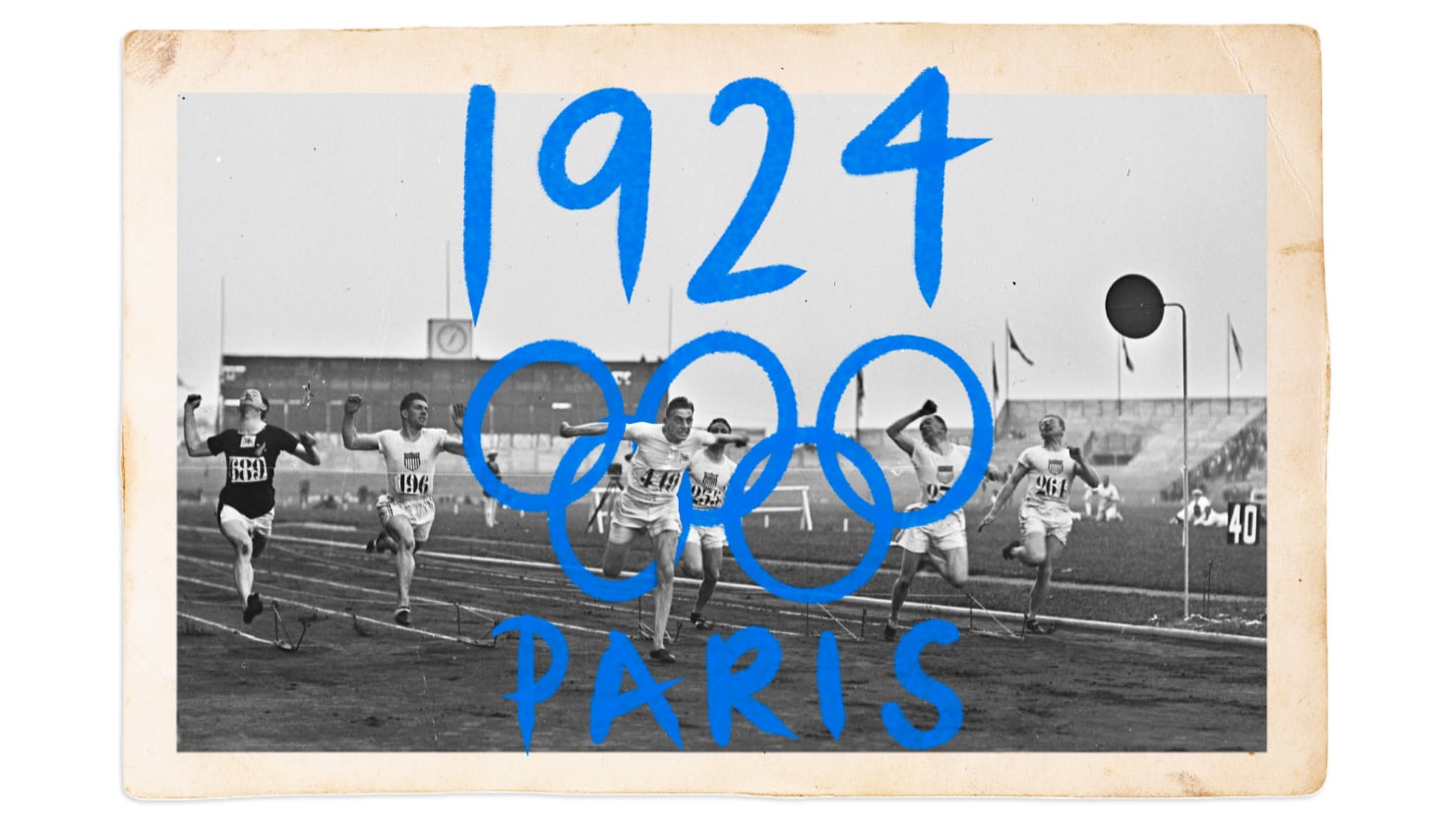Athletes last took over the City of Lights a century ago to vie for the honor of Olympic glory. Paris had hosted the Olympic Games 24 years prior as the international competition was first becoming established and while 1900 was an admirable attempt at a respectable tournament—not without its chaos—it was the 1924 Games that helped propel the Olympics into the future.
The participating nations jumped from a paltry 29 delegations at the 1920 Antwerp Summer Games to an impressive 44 nations, from as far as South America and South Africa. It marked the beginning of the Closing Ceremony tradition and the first appearance of the now-hyper-promiscuous Olympic Village. It also embraced modernity and welcomed the first-ever live broadcast of a multi-national sporting event on the airwaves, boasting more than 1,000 journalists in attendance.
As Europe was still reeling from the devastation of World War I, predictably, Germany was once again not invited to participate.
The United States “won” the Games for the second consecutive summer Olympiad with a total of 99 medals, 45 of which were gold.Only 299 U.S. athletes competed compared to the host nation’s leading 401.
Because the French are significantly more fabulous than most of the world (at least in this writer’s fawning opinion), they boasted perhaps one of the most glamorous venues the Olympics has dared to take over: Versailles. While just shooting took place at the gilded palace in 1924, it will serve as the venue for both equestrian and modern pentathlon events in 2024.
In just two weeks, Paris will be overflowing with contenders and spectators to take part in the celebration of physical human achievement. The Olympic Games officially begin in two weeks, on Friday, July 26.
Here’s a look at how far the Games have come in the past hundred years.
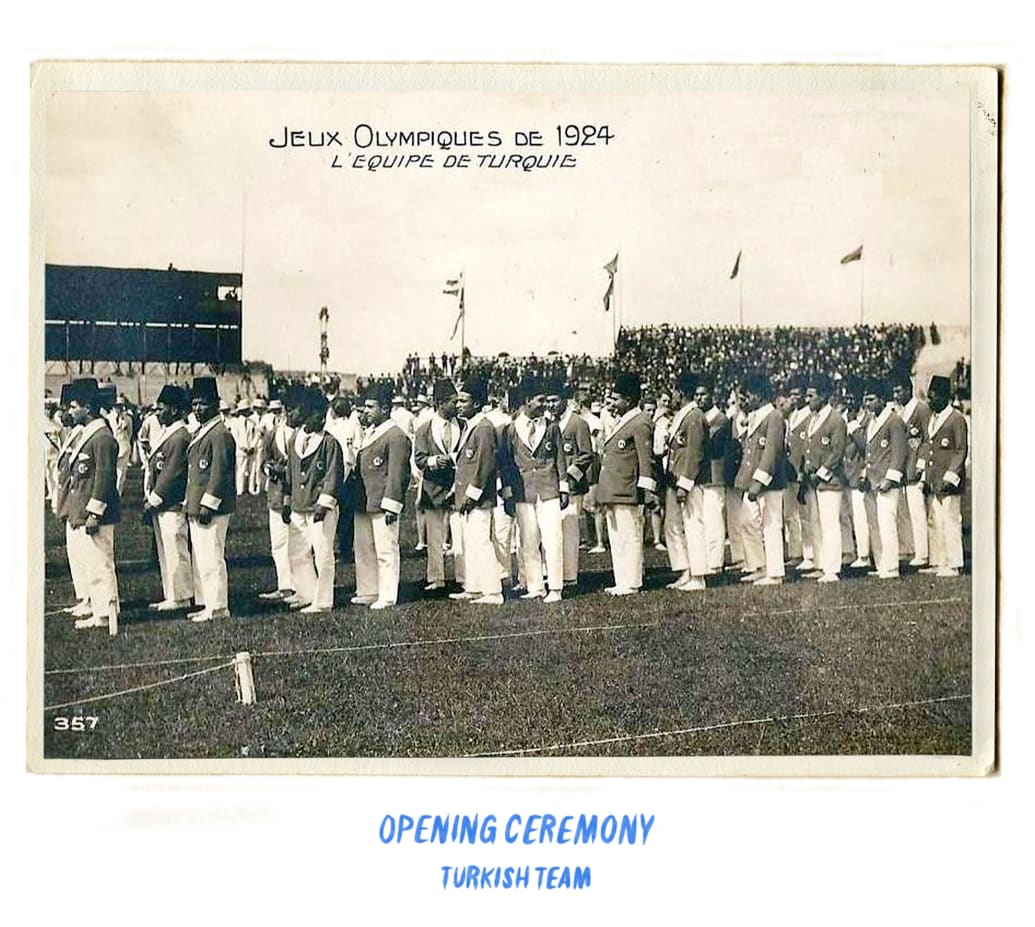
Photo Illustration by Elizabeth Brockway/The Daily Beast/Getty/Public Domain
The Games of the VIII Olympiad officially kicked off on July 5, 1924, with the Opening Ceremony at Colombes. Forty-four nations were represented with over 3,000 athletes competing in 17 sports. The Turkish team competed in their first Games–or, perhaps, their third, depending on how you classify them. What was then referred to as the Ottoman Empire competed in both the 1908 London Olympics and the 1912 Stockholm Olympics and made their debut as “Turkey” in Paris after the destruction of the Empire in 1922.

Photo Illustration by Elizabeth Brockway/The Daily Beast/Getty/Public Domain
The “Flying Finns” were yet another team of speedy Nords. The squad commanded the long-distance running events with Paavo Nurmi (far right) earning an impressive five gold medals and Ville Ritola (second from right) taking home six medals: four golds and two silver.
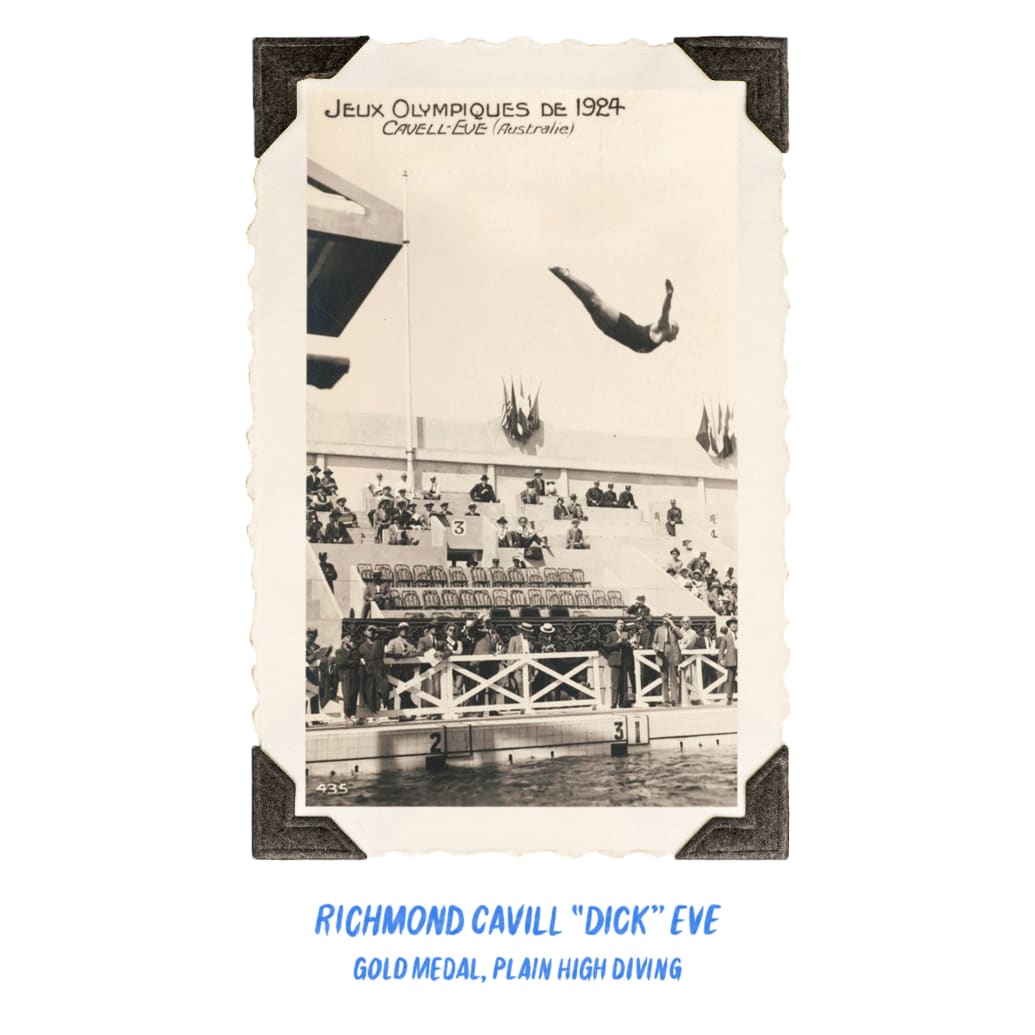
Photo Illustration by Elizabeth Brockway/The Daily Beast/Getty/Public Domain
Australian Dick Eve snagged first place in plain high diving and beat out 24 other athletes from 10 countries. He was the first ever diver that hailed from Oz to win gold at the Olympics.
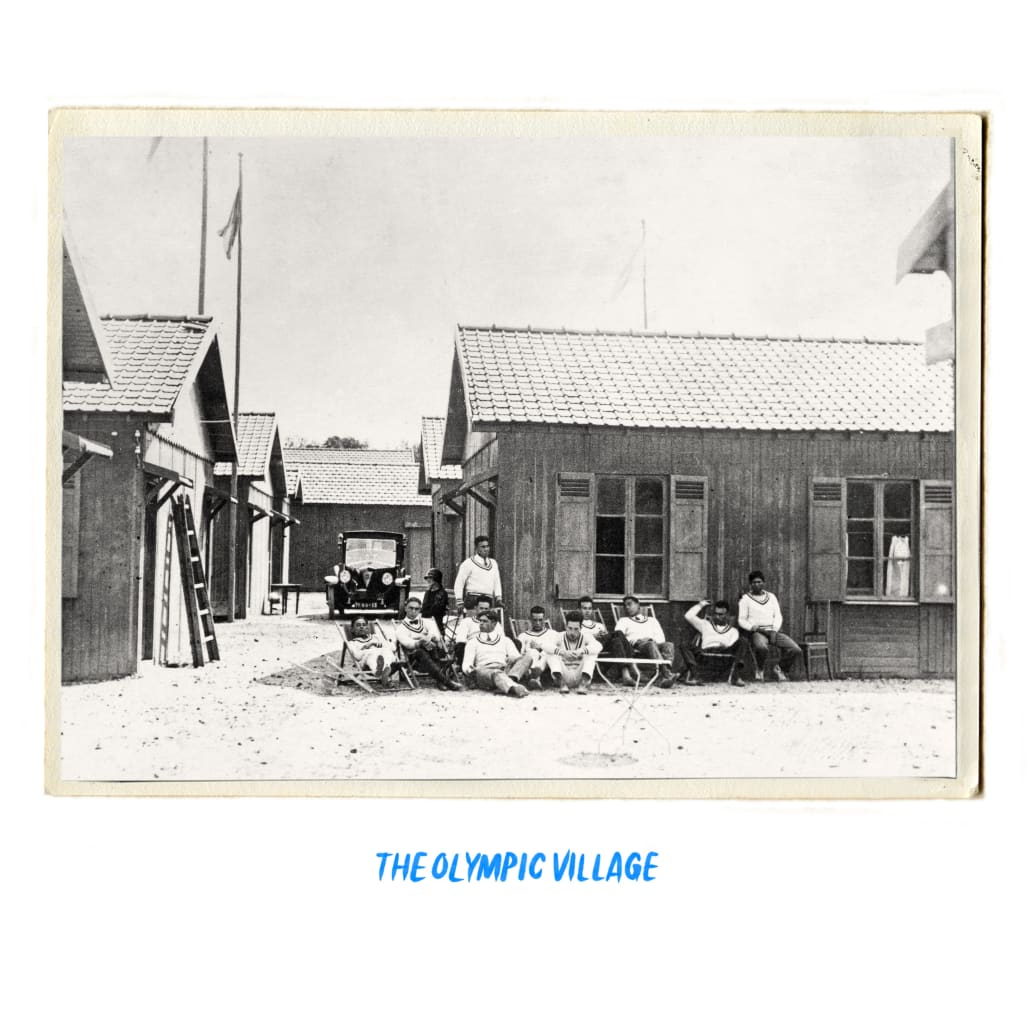
Photo Illustration by Elizabeth Brockway/The Daily Beast/Getty/Public Domain
The Olympic Village—in modest fashion—made its debut in Paris. The athletes lived in moveable wooden buildings that would generously be described as houses; however, they did boast running water and the complex included a post office, salon, and restaurant. These days, the Olympic Village is a randy compound, which this year, will be stocked with 300,000 condoms.
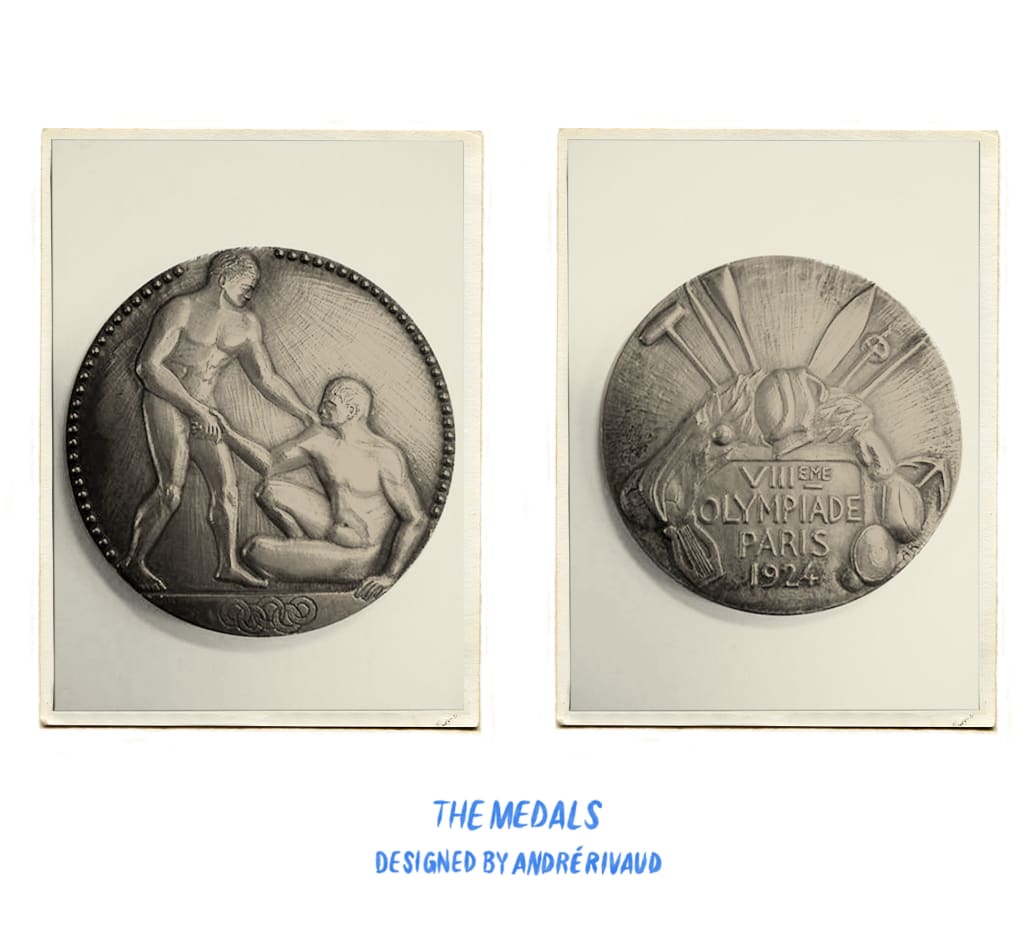
Photo Illustration by Elizabeth Brockway/The Daily Beast/Getty/Public Domain
When it comes to medals, 914 were minted for these Games–304 gold and silver each and 306 bronze. They were designed by André Rivaud and featured two naked athletes (a callback to the “uniforms” of the ancient Olympics), one helping the other up in an act of sportsmanship.
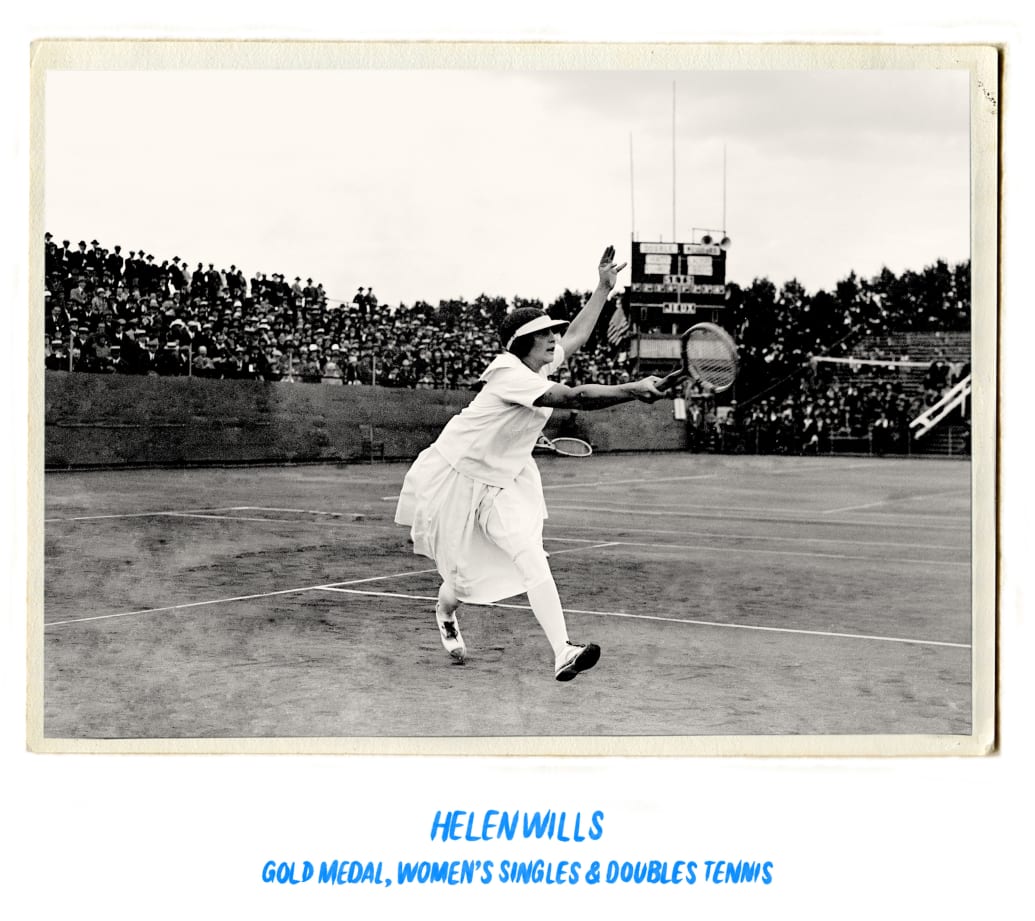
Photo Illustration by Elizabeth Brockway/The Daily Beast/Getty/Public Domain
Paris marked tennis’s final appearance at the Olympics for the next 64 years, with singles not returning until 1988 in Seoul and doubles remaining absent until the 2012 London Games. The Paris tournament included five events: men’s and women’s singles and doubles, as well as mixed doubles. The standout of the competition was 18-year-old American phenom Helen Wills, who won gold in both women’s singles and doubles. She would go on to win a remarkable 31 Grand Slam titles (among the various categories) over her career.
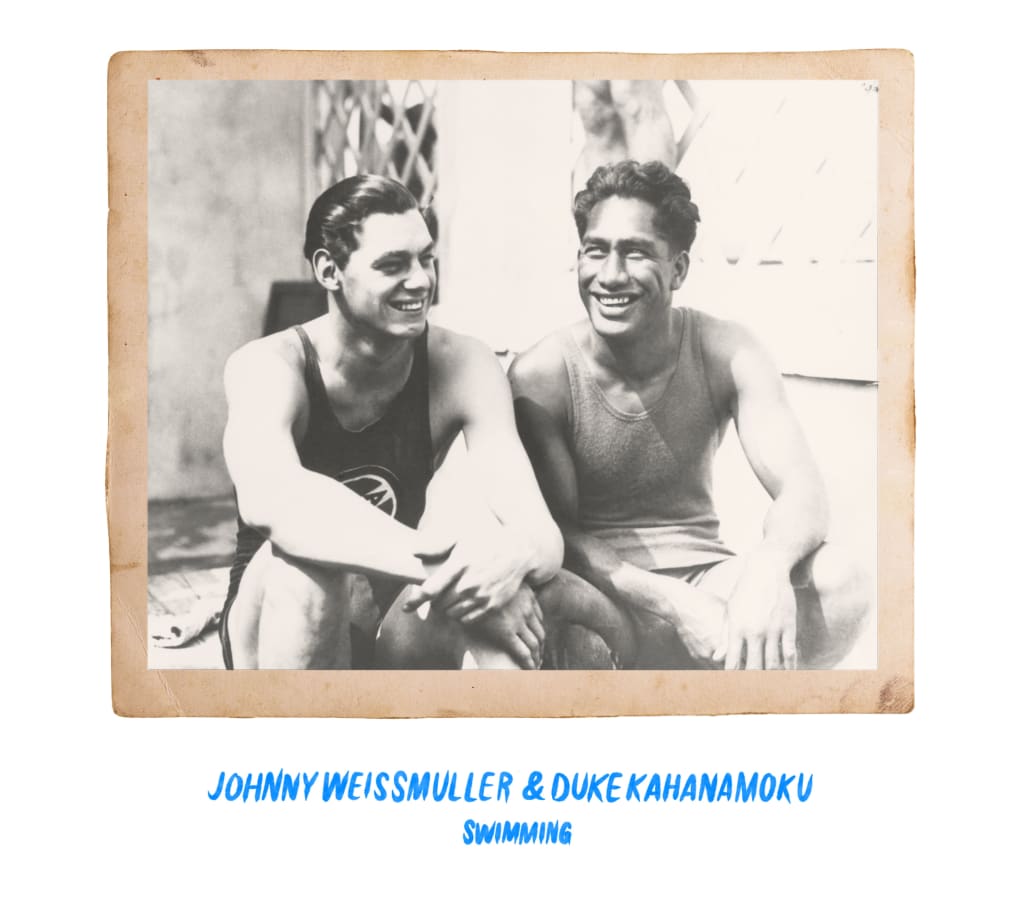
Photo Illustration by Elizabeth Brockway/The Daily Beast/Getty/Public Domain
The man who became Tarzan on the big screen first made his name away from the spotlight and instead in the pool. Before there was Michael Phelps, there were men like Johnny Weissmuller (left) who was one of the greatest swimmers of the last century. An Austria-Hungary-born American, Weissmuller won three swimming gold medals in Paris as well as a team bronze for water polo. After aquatic retirement, he played the King of the Jungle in 12 films.
Weissenmuller’s teammate, Duke Kahanamoku (right), was a Hawaiian competitive swimmer who eventually played a large role in popularizing the sport of surfing outside his home (not-yet) state. In Paris, Kahanamoku took home silver for the 100 meters, with gold going to Weissmuller, and bronze to his own brother, Samuel.
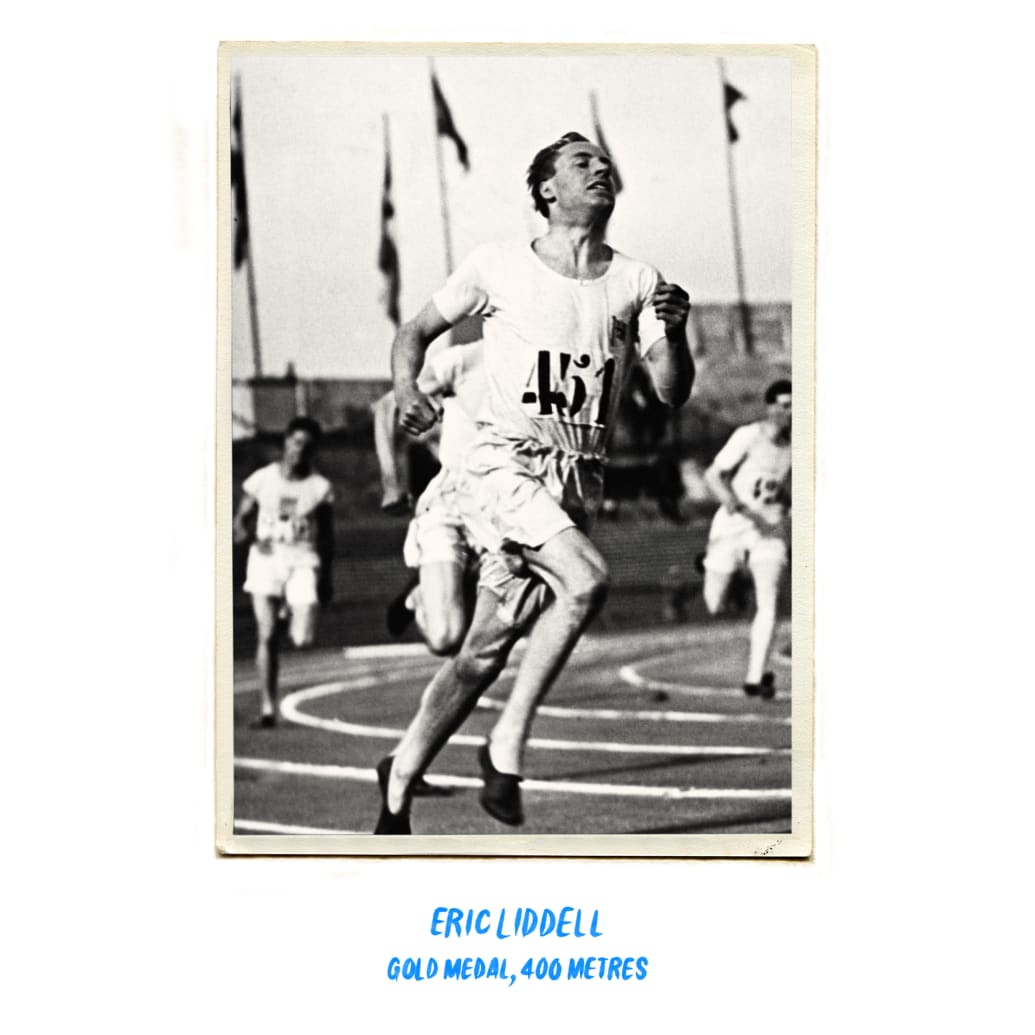
Photo Illustration by Elizabeth Brockway/The Daily Beast/Getty/Public Domain
Perhaps the most lasting story to come out of the 1924 Games are the duo who inspired the 1981 film Chariots of Fire. Scotsman Eric Liddell was a devout Christian born to missionary parents in China. The “man of God” was the clear favorite to win the 100-meter race but as it was scheduled to take place on a Sunday, he refused to compete. Instead, he took on the 400 meters, which he won, and the 200 meters, where he would take bronze. After the Olympics, he returned to China to continue his parents’ missionary work. In 1943, as the Japanese invaded China, Liddell was interned at a camp where he would later die, tragically, just five months before it was liberated.

Photo Illustration by Elizabeth Brockway/The Daily Beast/Getty/Public Domain
The second half of the Chariots duo was Harold Abrahams. He was an Englishman born to a Polish-immigrant Jewish father and a Welsh Jewish mother. Abrahams faced antisemitism while at Cambridge, which became a focus of the Oscar-winning film portraying his life. In spite of the bigotry he endured, Abrahams took home gold in the 100-meter race and silver in the 4×100 meter relay, where he served as the opener.
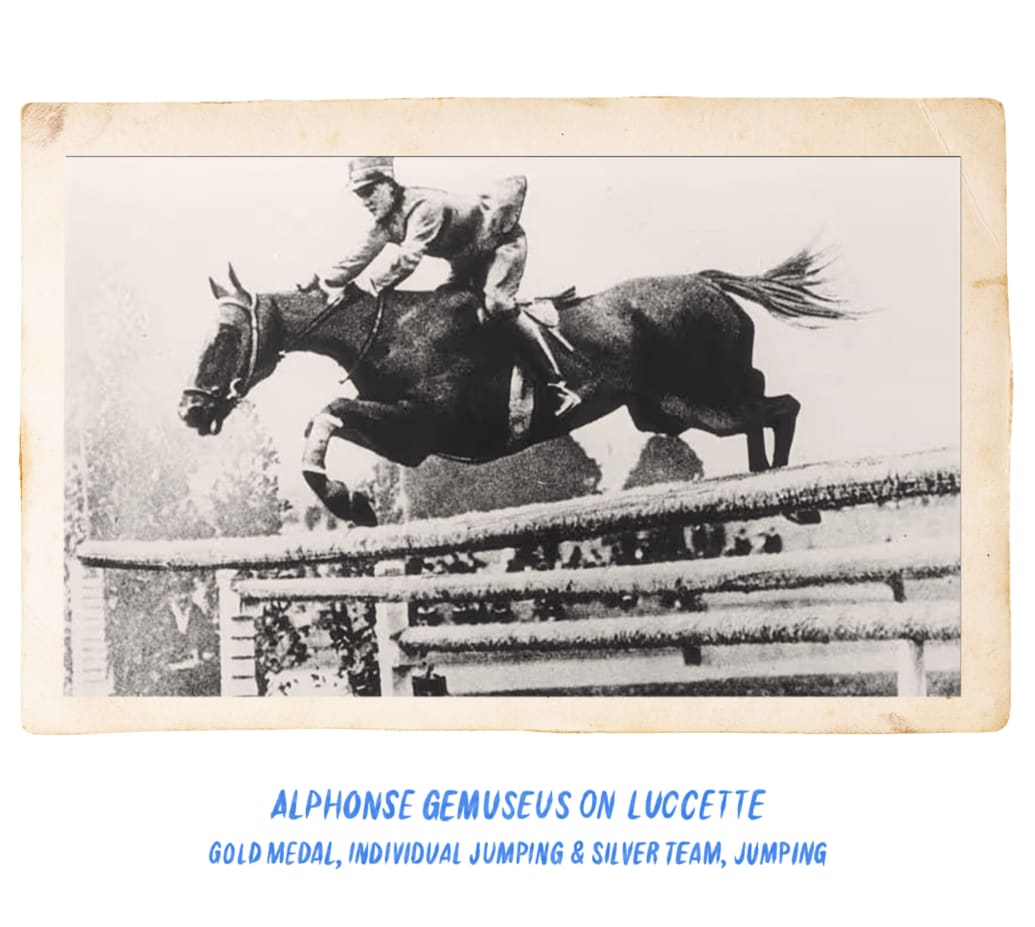
Photo Illustration by Elizabeth Brockway/The Daily Beast/Getty/Public Domain
Equestrian was once again a featured sport at the 1924 Games with five events including dressage, eventing, and show jumping. There were participants from 17 countries, though just five nations competed in all three disciplines: host France, Switzerland, Belgium, Sweden, and Czechoslovakia. Swiss rider Alphonse Gemuseus was victorious in individual jumping and took home silver with his countrymen in team jumping.

Photo Illustration by Elizabeth Brockway/The Daily Beast/Getty/Public Domain
The second Paris Games saw a huge uptick in women participating in the tournament. These Summer Games hosted 135 women, up from a mere 65 women at the 1920 Antwerp Games. Paris was the first time women were permitted to compete in fencing in the individual foil event. Denmark took home gold and bronze, with Great Britain snagging silver.
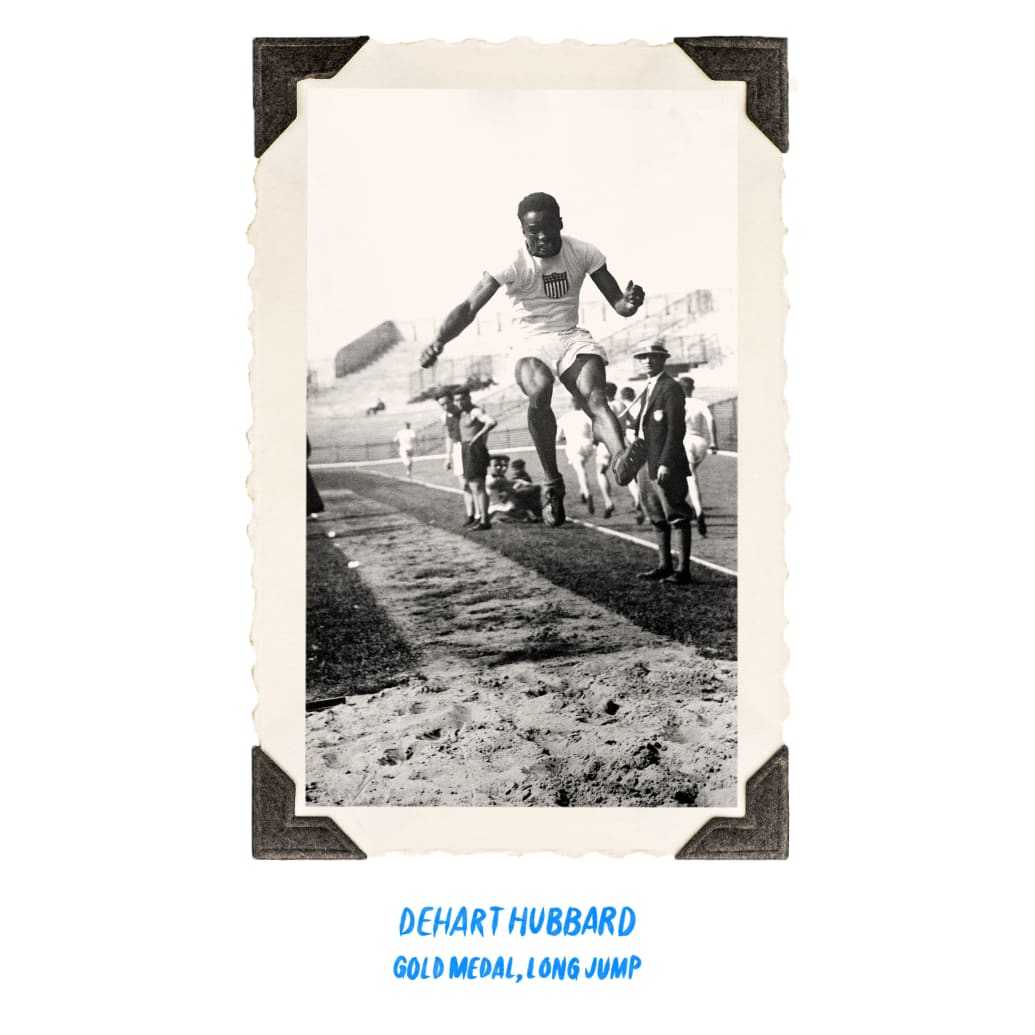
Photo Illustration by Elizabeth Brockway/The Daily Beast/Getty/Public Domain
American DeHart Hubbard became the first Black athlete to win an individual gold medal at the Olympics. John Taylor, an American born to former slaves, was the first Black man to win gold, doing so in the 1908 London Olympics as part of the men’s medley relay, where he ran the third leg. Despite injuring his heel in a prior jump, Hubbard was able to out-leap his competition and capture gold with a 24.5 foot long jump.
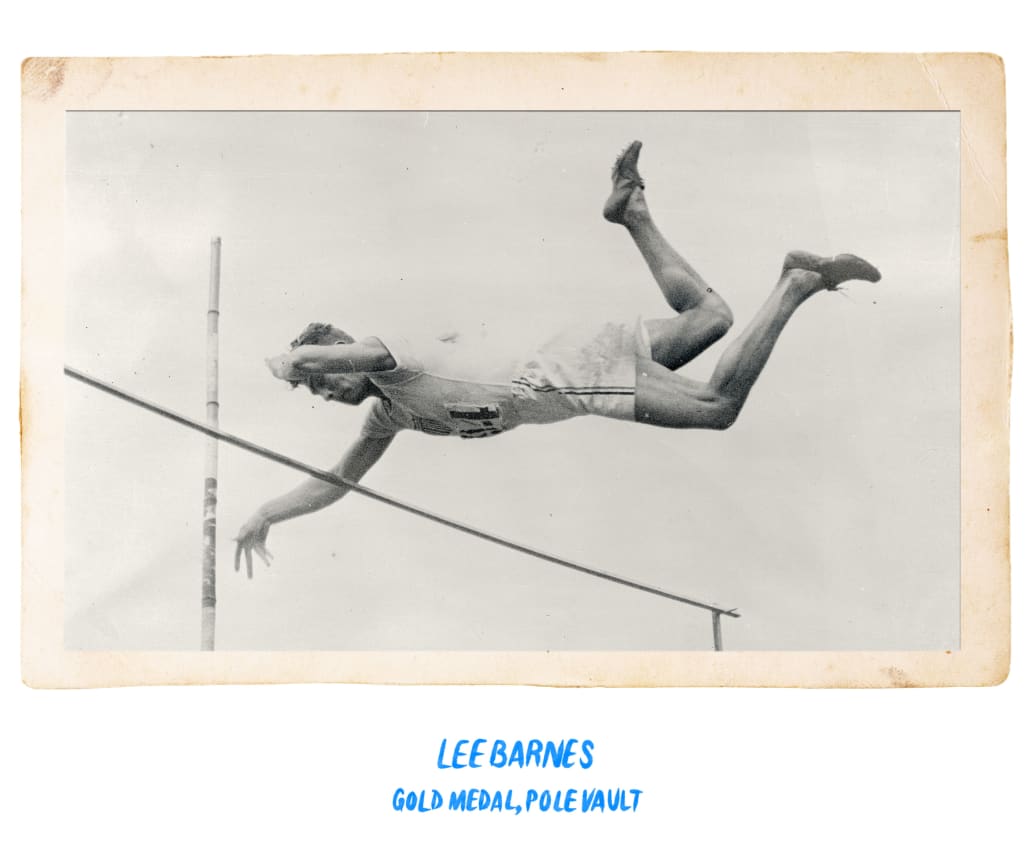
Photo Illustration by Elizabeth Brockway/The Daily Beast/Getty/Public Domain
America the beautiful, at least when it comes to Olympic pole vaulting. For the second time (after first doing so in 1908), the United States swept the event, with Lee Barnes taking gold, clearing a height of 3.95 meters. His win was the U.S.’ seventh consecutive victory.
Source link: What the Last Paris Olympics Looked Like in 1924
